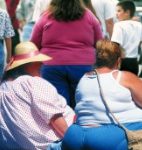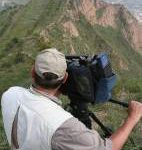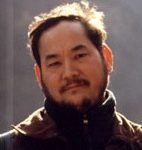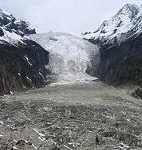In 1995, the World Bank asked John D. Liu to record the early stages of its Loess Plateau Watershed Rehabilitation Project for a film called Investing in People. That film was about initiatives that were changing the bank’s focus from large infrastructural projects to ones in which poor people living in remote parts of the world would directly benefit.
Over the following decade, Liu led the Environment Education Media Project on numerous other visits to the Loess Plateau, which is considered the cradle of Chinese civilisation. Approximately the size of France, the plateau is 640,000 kilometers square, situated in the upper and middle reaches of the Yellow River, and stretching over parts of seven provinces. Its name comes from the powdery, mineral-rich, windborne loess soil that characterises the area – and which gave the Yellow River its name.
Settled agriculture is thought to have emerged 9,500 to 10,000 years ago on the Loess Plateau. Throughout the plateau’s long and complex history, human activity produced a great civilisation, while also ecologically destroying the region. It came to be known as the most eroded place on earth. Silt raised the riverbed, making it more prone to flooding – flooding that often preceded drought and famine. The Yellow River, which has flooded more than 1,500 times in recorded history, became known as “China’s Sorrow”. But each time it flooded, the people rebuilt.
The ecological devastation of the region took place over generations with the cutting of forests and removal of vegetation cover, leading to soil erosion, disruption of the water cycle and the disappearance of wild plants and animals. A cycle of poverty and environmental destruction ensued, a cycle that fed on itself.
In the 1990s, the Chinese government decided to restore what took 10,000 years to destroy. Thanks to a complex programme of watershed management – formulated by the World Bank in cooperation with the Chinese Ministry of Water Resources and the local people — an astounding transformation has occurred within just 10 years. Ecological improvements have shown tremendous promise, and local people’s income and quality of life have improved.
Planting on steep slopes has been banned, as has tree-cutting and grazing of goats and sheep. Farmers are responsible for maintaining tree-planting areas and terraced fields, to reduce erosion. Sand dunes have been stabilised, and grasses and bushes are taking hold again. Small dams are helping to restore productive croplands in eroded gullies, and perennial crops (such as orchard fruits) are reducing the disruption of soil cover and helping to diversify local economies.
The successful start to the ambitious rehabilitation of the Loess Plateau has significant implications for other places on earth which suffer from large-scale environmental degradation as a result of human impact, and can serve as model for those regions.
The plateau’s tale, Liu believes, provides the kind of critical knowledge the world needs now if it is to envision a sustainable future for a human race living in harmony and sharing the planet’s resources. With support from several development agencies, he has collected more than 100 hours of videotape of the region, its people and the ongoing rehabilitation effort. A fraction of those tapes will make up his latest film project, China’s Sorrow, Earth’s Hope.
The Author: Maryann Bird is a London-based journalist
Still image taken from John D. Liu’s film China’s Sorrow, Earth’s Hope



